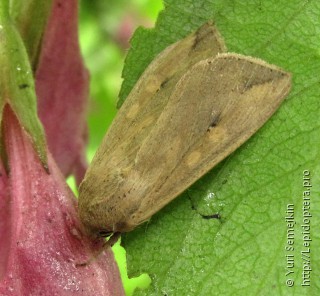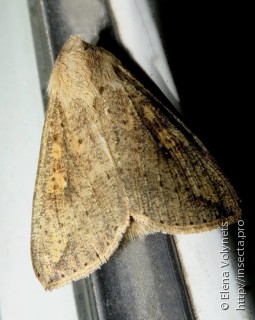Mythimna separata
Taxonomy
class Insecta
Species name(s)
Mythimna (Pseudaletia) separata (Walker, 1865) = Leucania separata Walker, 1865 = Pseudaletia separata = Mythimna (Pseudaletia) separata. [3, 9]
urn:lsid:insecta.pro:taxonomy:14151
Expansion
This species marks on the maps: 1.
Russia regions
#31. Yuzhno-Yakutsky; #36. Sredne-Amursky; #37. Nizhne-Amursky; #38. Sakhalin; #39. Yuzhno-Kurilsky; #40. Primorsky.
Detailed information with references
Distribution
Imago Habitus and Differences from alike species
General info about Imago
Imago lifespan
General info about Larva
Larva food plants / other food objects
Pupa
Egg
Overwintering stage
Authors
Initial species uploading to the site: Peter Khramov.
Text data: Peter Khramov, Yuri Semejkin.
The species characteristics formalization: Peter Khramov.
References
- [3] Каталог чешуекрылых (Lepidoptera) России. Под ред. С. Ю. Синёва. СПб.; М.: Товарищество научных изданий КМК, 2008
- [9] Tree of Life (funet.fi), 2012
- [204] Под общей редакцией П. А. Лера Определитель насекомых Дальнего Востока России том 5. Ручейники и чешуекрылые, часть 4. Владивосток : Дальнаука, 2003
- [281] Онисимова З.Г., Кононенко В.С., Беляев Е.А., Товба М.С. Восточная луговая совка-вредитель зерновых культур. Владивосток, 1987:
Comments
Note: you should have a Insecta.pro account to upload new topics and comments. Please, create an account or log in to add comments
Mythimna separata photos









All the photos of the species in large size
Please, create an account or log in to upload your photo



























